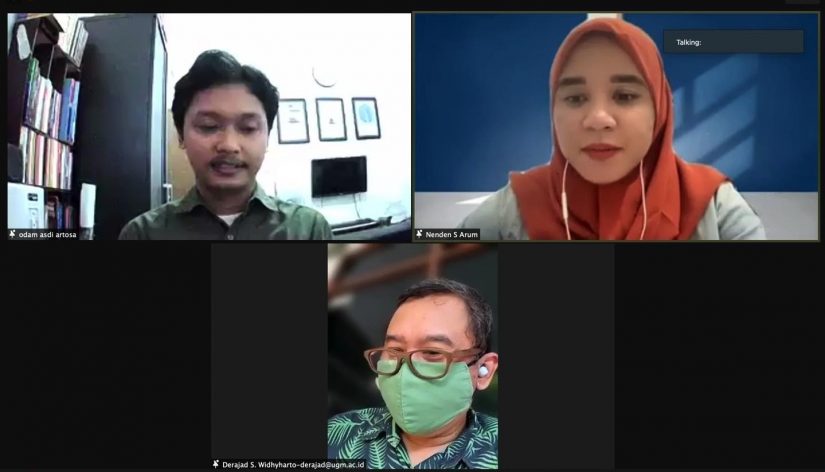
Yogyakarta, July 23rd 2021─The Social Research Center (SOREC), a study center under the Department of Sociology, FISIPOL UGM, held a monthly discussion entitled “Algorithms, Conspiracy Theories and Data: The Second Wave of COVID-19 in Indonesia” on Friday (23/7). On this occasion, SOREC invited two speakers, they were Nenden S. Arum, a SAFEnet volunteer and Derajad S. Widhyharto, M.Si, a lecturer at the Department of Sociology of UGM. The event took place through a Zoom Meeting at 03.30 to 05.30 p.m., moderated by Odam Asdi A., M.A., a SOREC researcher.
Hoaxes and misinformation about COVID-19 affect the level of spread of COVID-19 in Indonesia. One of the conspiracy theories that states that COVID-19 is made by the global elite has caused some of them not to believe in the existence of COVID-19, so this has implications for delays in handling when they are exposed to COVID-19. In addition, hoaxes about COVID-19 are also used to repress those who are critical of government policies related to handling COVID-19.
In his discussion, Nenden explained how we should minimize the spread of fake news. When receiving information, we are required to verify the information to avoid hoaxes. There are five principles in verifying, namely provenance (whether this is original content), source (who created this content), date (when this content was produced), location (where this content was created), and motivation (why this content was created). ). However, this method may be considered complicated because it is still manual. Therefore, we can also use tools on several platforms and media to check the truth of the news, including checkfact.com, fact check at tirto.id, tempo.co fact check, and turnbackhoax.id.
“The five steps of the verification processes have actually been carried out by journalists, so now it’s easy for friends to get information, all you have to do is look for it at cekfakta.com, it will appear whether this is misinformation, disinformation or other things related to the information we seek,” Nenden said.
Meanwhile, the most platform data related to the spread of hoaxes are Facebook, short message applications, Instagram, Youtube, and Twitter. In this case, Derajad explained that there was an extraordinary capitalization through digital media as a factor in the emergence of hoaxes. The development of social media today has covered all lines of life. Interestingly, the platform does not only provide something free, but also has implications for other forms of trading or efforts to make the platform a medium of capital.
“Indeed, if we can admit that now times have changed, that the availability of the platform has implications for forms of barter and so on. This confirms that they are profiting from this process, that’s what we have to realize is that this is the most basic element of how we understand why hoaxes arose,” Derajad said.
